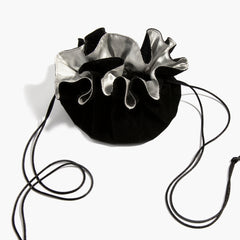_____
We all know the XO symbol. Long before there were emojis, people have used ‘X’ to represent “kiss” and ‘O’ to represent “hug.” Depending on the enthusiasm and depth of feelings on the part of the sender, the sentiment can be expressed as a simple ‘XO’ or the more affectionate ‘XOXO.’ We also see XO in the context of tic-tac-toe where these symbols are known as crosses and naughts.
But what does XO mean, and where do the symbols ‘X’ and ‘O’ come from? Now, that is an interesting question with more than one possible explanation.
Some see the letters as purely visual symbols, the ‘X’ being a symbolic depiction of two mouths kissing and the ‘O’ of two pairs of arms coming together in a hug. Seen in the light of today’s world of emoticons, this explanation makes sense, but the truth likely has deeper roots.
History of XO
The ‘X’ was a common mark in the Middle Ages when many could not read or write. They were asked to sign important documents with their ‘X.’ This was universally recognized, simple to execute, and also referenced the Christian cross, a symbol of faith and fidelity.
Not only was X used as a signature substitute, it also served as an embossed seal for important documents. When letters or documents that were promises of political or economic allegiance between kings and their subjects were exchanged, X was considered “sealed with a kiss,” a promise made between parties. This later inspired the acronym SWAK (sealed with a kiss), made popular in World War I on letters sent home to loved ones by soldiers at the front. With time, X evolved from a sign of a solemn pledge to a symbol of romantic love.
As for ‘O,’ much less is known or speculated about how it came to symbolize a hug. Some say that those who did not ascribe to Christian beliefs, such as Jewish immigrants who could not write in Latin script, chose instead to sign their documents with an ‘O.’
Strangely, though, it might have more to do with tic-tac-toe than anything else. Both the game and the first mention of ‘X’ or ‘O’ as signs of affection date from the last half of the 19th century. Some say they are naturally contrasting symbols, so the ‘O’ became a natural complement to the ‘X’ to serve as the accompanying hug to a loving kiss.
What does XO mean?
The truth is ‘X’ and ‘O’ today are still widely used and recognized as sincere signs of love and affection. Here’s a quick primer on how you can express your love with these iconic symbols:
XO – When you want to say it simply – could be used for family and close friends in addition to significant others.
XOXO – When a simple “XO” just isn’t enough–usually reserved for your romantic partner.
X – Like a single red rose, this could be the ultimate understated “I love you.”



